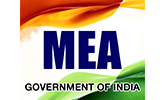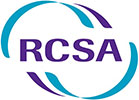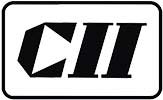Mining Sector Recruitment
Mining Industry today is changing drastically, and more than revolutionary, these changes are referred to as ‘evolutionary’. A massive increase in the number of projects under planning and development worldwide, are calling for huge investments, cutting edge technologies, better work environment and conditions and most of all, quality manpower. Particularly in countries like Scandinavia, Canada, India, South East Asia, Australia and China, the pressure to provide economic, efficient and effective mining solutions, is mounting considerably.
Mining, as a process, is dependent on several specialty machinery and equipment, besides special skilled manpower. The process itself is divided into 6 unique levels or steps, each of which requires special machinery or equipment, and accordingly skilled personnel. The first step is ‘prospecting’, which involves investigation (geochemical and geophysical surveys), as well as exploratory drilling and trenching. The second step is obtaining the legal rights of acquisition of the site’s interests/minerals, to explore, develop and produce the minerals. The third step is exploration, which is like the first step done with much more detailing. The fourth step is evaluation and appraisal, which involves studying the site for its technical feasibility and commercial viability. If this step approves the site for exploration, the fourth step of development begins, which involves sub-processes to gain access to the mineral reserves. This usually includes sinking shafts, permanent excavations, building transport infrastructure and initial removal of overburden. The final step referred to as ‘construction’, establishes and commissions facilities (like buildings, machinery and equipment) to extract and transport the extracted reserves.
According to E&MJ’s annual survey, 105 new mining investment projects were announced, with the Raw Materials database registering their total cost at US$ 60 billion. The total amount of investment in the global mining industry’s project pipeline as recorded in RMD’s database is US$ 562 billion (end of 2010). A recent study estimates the world mining equipment industry to be worth US$ 45.4 billion (2008), projected to rise at a rate of almost 5 percent annually through 2013.
The 494 mineral exploration and development companies participating in The Fraser Institute’s Survey of Mining Companies 2010-2011, reported exploration spending of US$ 1.86 billion in 2009, and a massive US$ 2.43 billion in 2010. According to the new Mining Deals report issued by PricewaterCoopers (PwC) in March 2011, China accounted for only a six percent share of mergers and acquisitions (M&As) in the global mining industry, while Canada accounted for 36 percent, and America and Australia were responsible for 16 percent each, of M&As in the industry.
The ‘Global Mining Industry Outlook to 2010’, conducted in association with 1,000 senior industry executives, Global Markets Direct and ICD Research, brought forward a noteworthy highlights:
- 44 % of mine owners, operators, contractors and metal processors expect to increase their procurement spend over the next 12 months.
According to KPMG’s 2009 Mining Executive Industry Survey (released Feb 2010), scarcity of skilled manpower is among the prime challenges the global mining industry faces today. The shortage of mining professionals is affecting production capacity and standards up to as much as 73%.
You’re welcome to reach us via email at client@imr.in to know how we can be your one stop mining manpower recruitment agency in India.






.jpg)